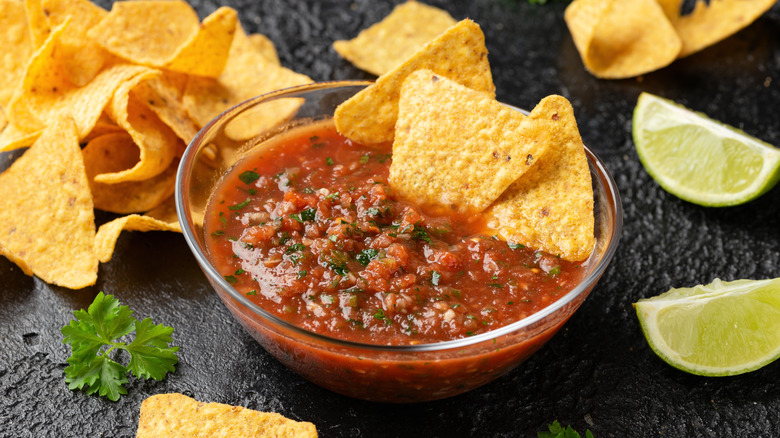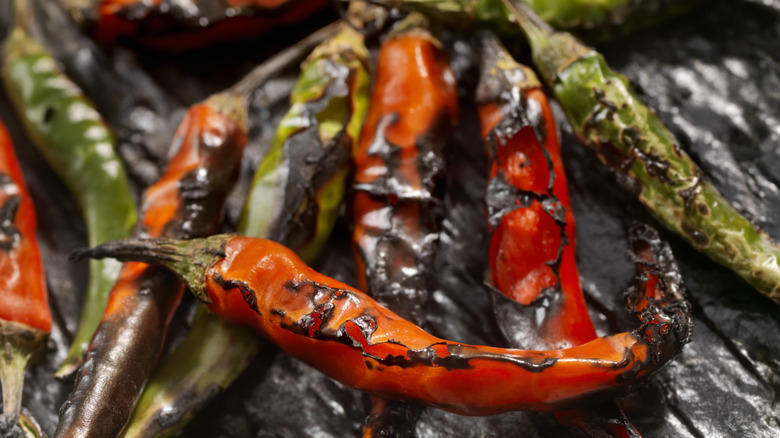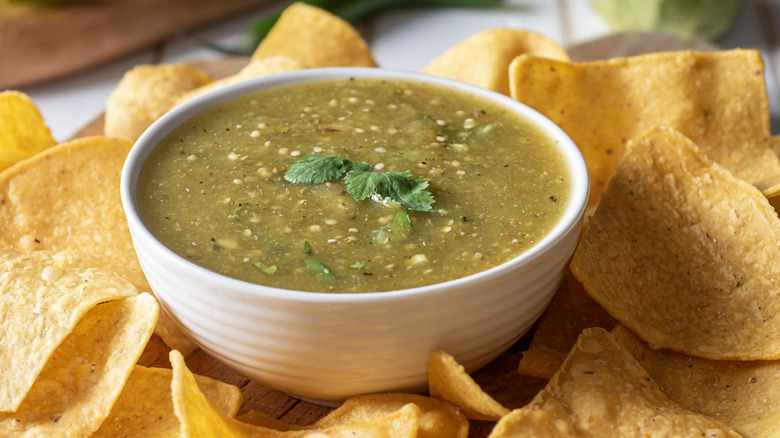Show Your Salsa Ingredients A Little More Love For A New Level Of Flavor
Few recipes have a lower effort-to-deliciousness ratio than salsa fresca. Toss tomatoes, onions, and peppers in a food processor, and approximately 30 seconds later, you'll have a bright, refreshing sauce. But sometimes, you don't want bright and refreshing. You want meaty, smokey, sweet, and complex. That's when you need to cook your salsa ingredients.
Salsa roja, salsa verde, and chile tamulado are just a few examples of cooked salsas. As great as fresh ingredients can be, roasting, charring, or even boiling them can make them even better. Tomatoes become sweet and jammy in the oven. An open flame blisters and smokes chiles. And a few minutes in a pot of boiling water mellows tomatillos' acidic bite.
Cooking your salsa ingredients doesn't have to take much time or effort. All you have to do to make a quick red salsa is roast tomatoes, onions, and jalapeños on a tray, then blend. It's almost as easy as pico de gallo.
How does cooking ingredients change your salsa?
To understand how cooking ingredients can change your salsa, consider pico de gallo and salsa roja. They're basically made of the same ingredients: Tomatoes, onions, chiles, and cilantro. But they taste completely different. Pico is bright and punchy, with biting raw onion. Salsa roja is sweet and mellow, with an almost meaty quality. Part of the difference is that pico is chopped, and salsa roja is blended. But mostly, it's because salsa roja is cooked.
Food changes when heat is applied. Water evaporates, concentrating the flavor; sugars caramelize, adding complexity; and with high or direct heat, skin chars, imparting a smokey flavor.
Those changes are great for salsa ingredients. Roasted tomatoes are sweeter, with less water content, than raw tomatoes. This is good news when you have fresh, seasonal tomatoes, but even better when you're stuck with bland winter tomatoes. Jalapeño, poblano, and habanero peppers are also great candidates for cooking. If you have a gas oven and a big pepper, cook it directly over an open flame for blackened skin and warm flesh.
Cooked salsa inspiration
If you want to try cooking your salsa ingredients, start with the classics. The salsa roja on the table at your local Tex-Mex joint is probably made with roasted ingredients. To make it at home, just halve some onions, peppers, and tomatoes and pop them in the oven. You'll get deep flavor in less than 30 minutes. More of a salsa verde fan? Boil tomatillos to mellow out their mouth-puckering sourness, then blend them with other tasty ingredients like chiles, cilantro, and onions.
Of course, there's more to salsa than roja and verde. There's mango salsa, papaya salsa, pineapple avocado salsa, and many, many more. There's no reason you can't cook the ingredients of these salsas — or any other salsa you want to try — too. Grilling, roasting, or open-flame-grilling ingredients add complexity and will transform the texture. Once you know that, you can try those techniques with any salsa recipe.


